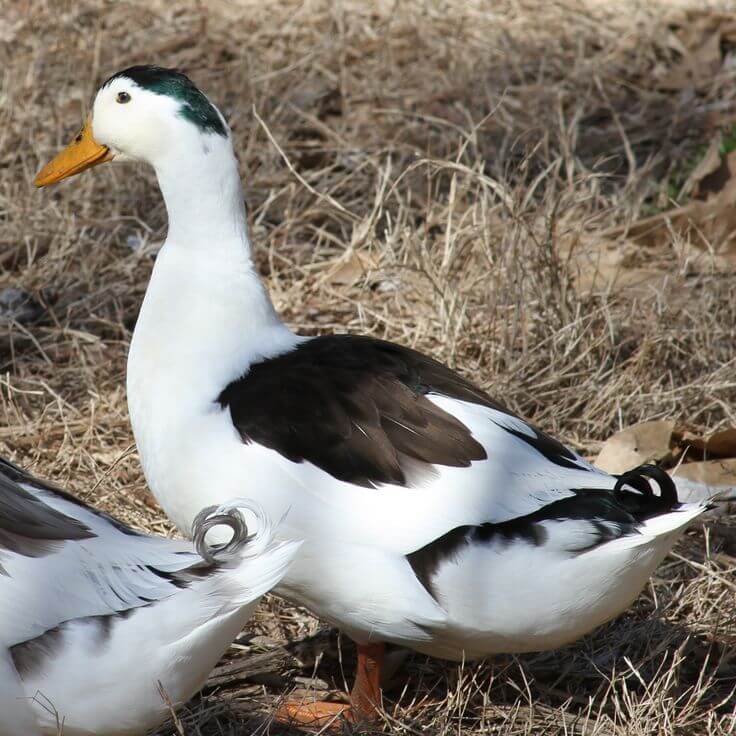Magpie Duck

Scientific Name
Anas platyrhynchos domesticus
Alternative Names
Magpie Duck, British Magpie
Measurements
| Feature | Male | Female |
|---|---|---|
| Length | About 55–65 cm (22–26 in) | About 50–60 cm (20–24 in) |
| Weight | 2.5–3.2 kg (5.5–7 lb) | 2.0–2.7 kg (4.5–6 lb) |
| Wingspan | Around 80–90 cm (31–35 in) | Around 80–90 cm (31–35 in) |
Status
First bred in Britain after World War I by M.C. Gower-Williams and Oliver Drake. Listed as “critical” by the FAO in 2007, but later marked as “unknown” in more recent reports. Rare and mostly kept by breeders and hobbyists today.
Identification
A medium-sized duck with striking black-and-white plumage that resembles the pattern of the European magpie. The bird is mostly white with black on the head, back, tail, and shoulders, forming a heart-shaped patch when the wings are folded. With age, the black areas often turn speckled or fully white. The bill is long and broad—yellow when young, later becoming grey-green in females and green-speckled yellow in males. The legs and feet are orange, sometimes mottled with darker markings.
Voice
Typical soft quacks; males are quieter, and females have a louder, sharper tone.
Diet
Eats grains, aquatic plants, and small insects. When raised domestically, it feeds well on standard duck or poultry feed.
Distribution
Originated in the United Kingdom and later exported to the United States in 1963. Now found in small numbers in Europe and North America.
Habitat
A domestic breed that thrives on small farms or in backyard ponds. Prefers open grassy areas with access to clean water.
Breeding
Lays about 80 eggs a year, which range from white to pale green and weigh around 65 g each. Noted strains like the old “Paramount” line once laid up to 185 eggs per year. Breeding began with black-and-white and blue-and-white color types; later, dun-and-white and chocolate-and-white were added.
Wintering
A hardy domestic breed that adapts well to cold weather when given shelter. Does not migrate.
Conservation
A rare breed with small global numbers. Efforts by duck breeders’ clubs and poultry associations help to maintain the population. Still considered uncommon but valued for its unique markings and utility background.
